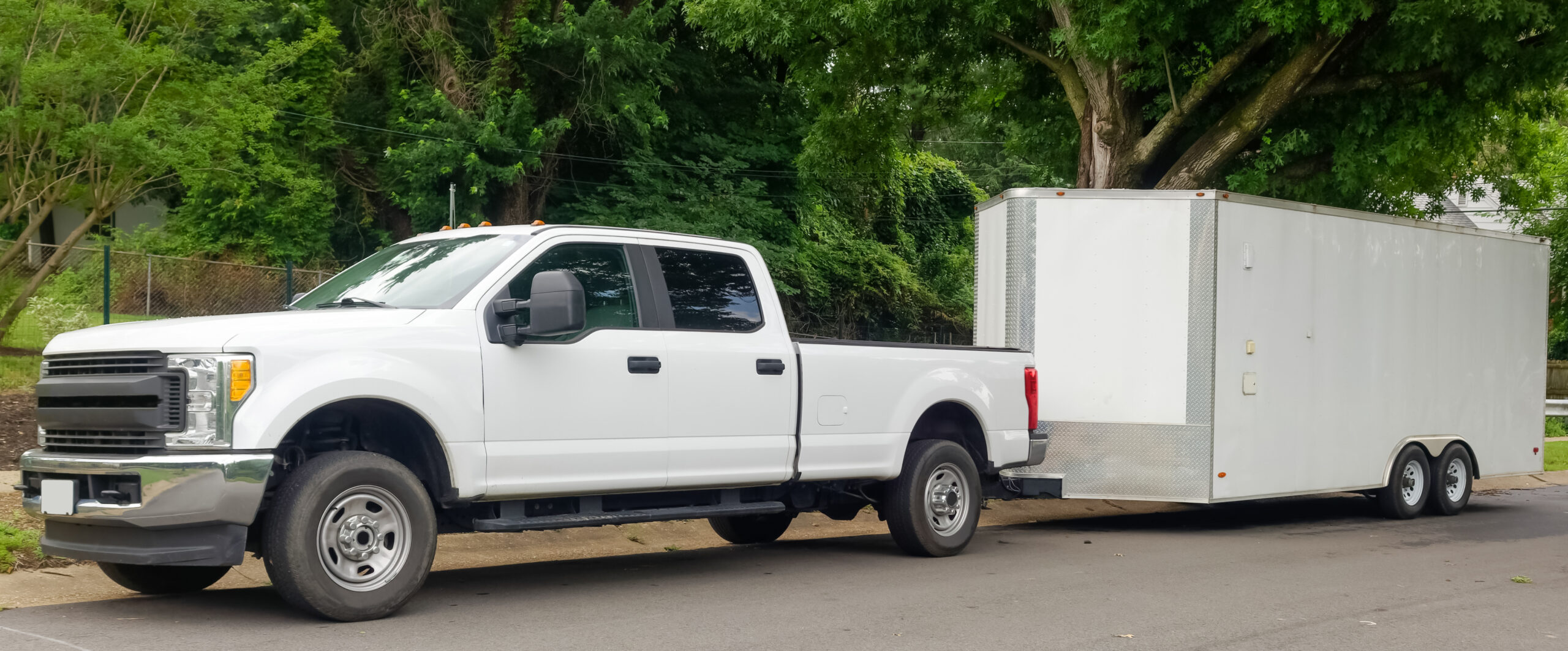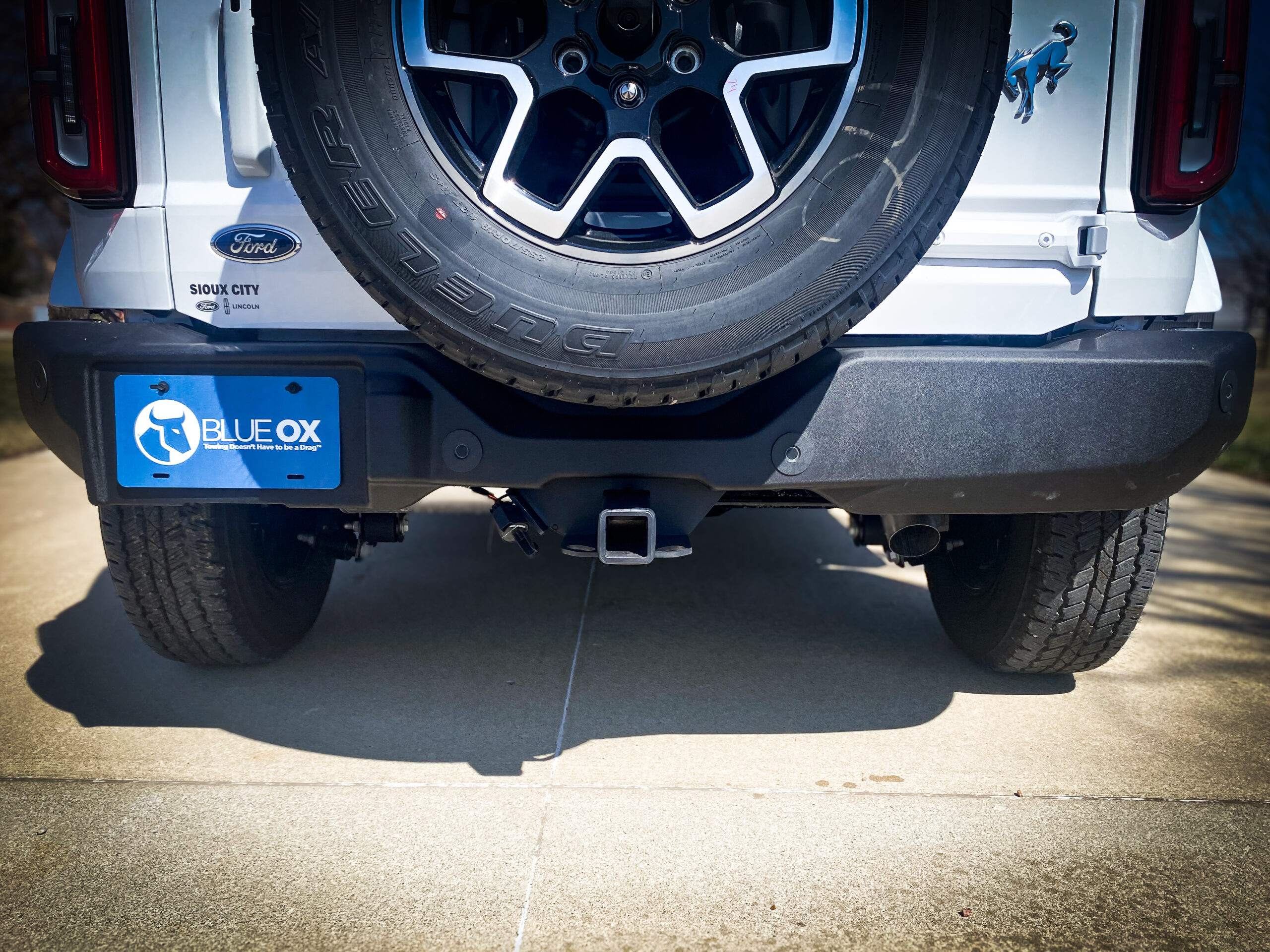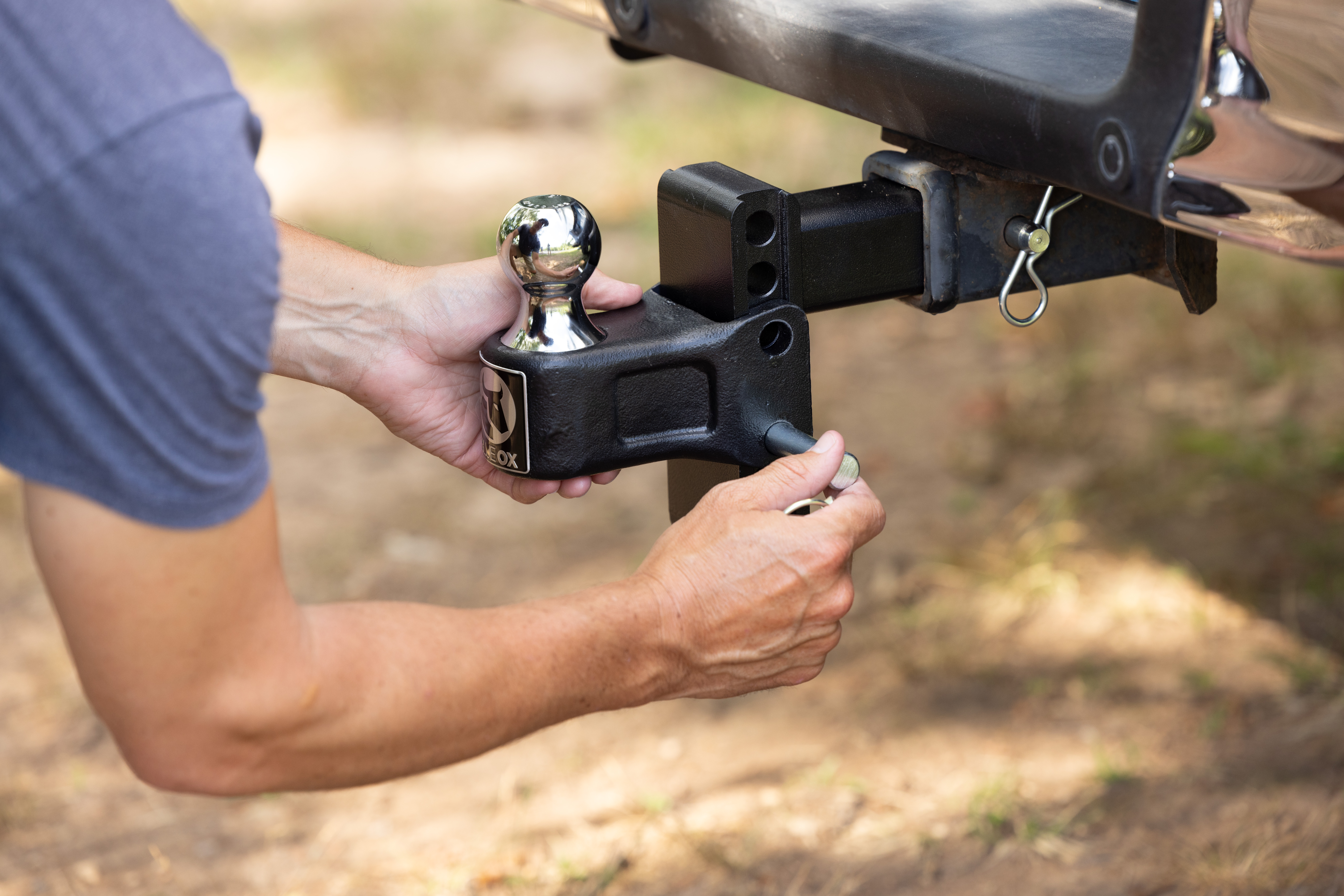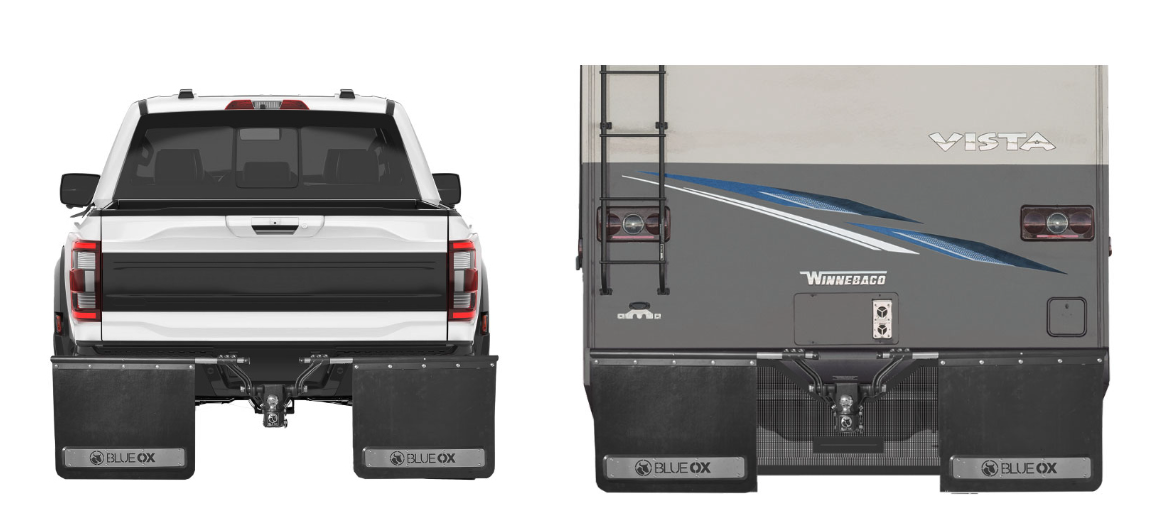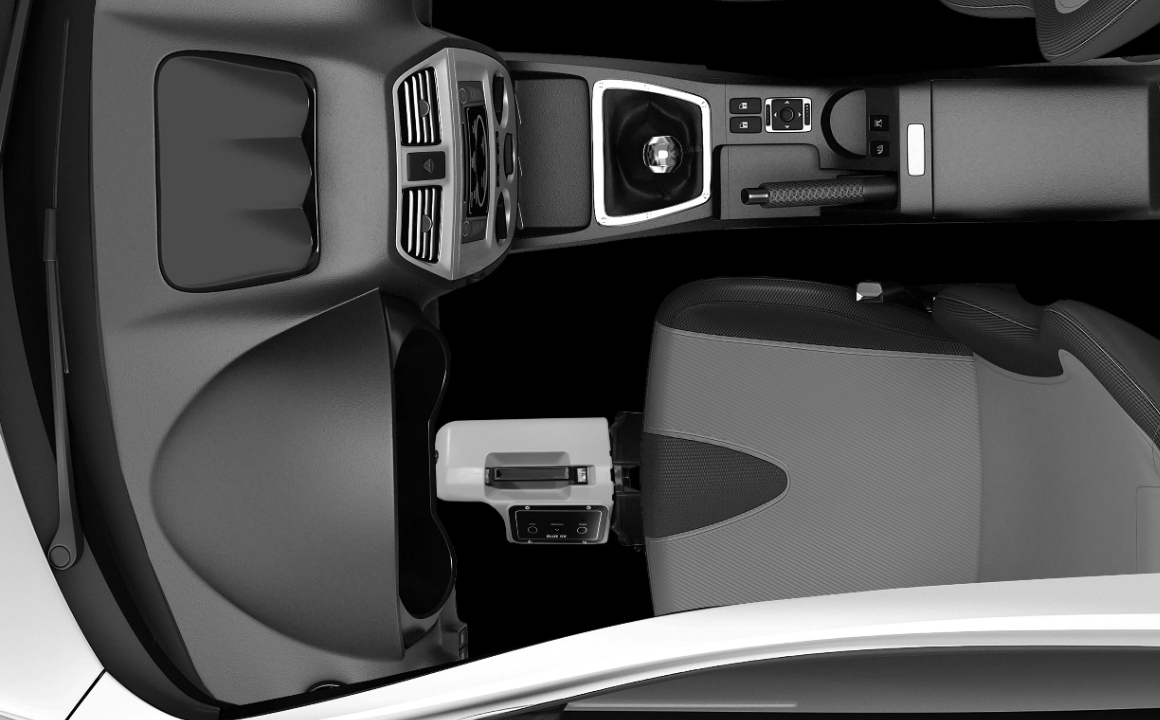Towing a trailer, whether for recreational use, moving, or professional hauling, presents challenges and responsibilities. Trailer sway is a significant safety concern faced by drivers on the road. If not correctly managed and prevented, trailer sway can lead to dangerous situations, including loss of vehicle control, road accidents, and even injury to drivers and passengers. This guide will explore the phenomenon of trailer sway, its implications for towing safety, and the importance of using effective weight distribution techniques and hitches, and the benefits of those that include sway prevention.
Understanding Trailer Sway
Trailer sway is more than just a nuisance for those towing; it’s a significant safety hazard that can compromise the well-being of the driver, passengers, and others on the road. It occurs when a trailer attached to a vehicle begins to move side to side, independently of the tow vehicle’s direction. This lateral movement can escalate, leading to the driver losing control of the vehicle and trailer. Trailer sway can lead to accidents, rollovers, and severe injuries.
What Causes Trailer Sway?
Several causative factors are at the core of trailer sway, including crosswinds, uneven loads, and sudden maneuvers. However, understanding trailer sway also involves the dynamics between the tow vehicle and trailer and how external and internal factors influence this relationship. Common towing errors like improper loading, insufficient tire pressure, and failure to use a weight-distribution hitch increase the risk.
Weather’s Role in Trailer Sway Dynamics
Weather conditions can significantly influence the dynamics of trailer towing, affecting both the tow vehicle and the trailer’s stability. High winds are among the most common weather-related causes of trailer sway. When wind hits the side of a trailer, it can create a pushing force that causes the trailer to move laterally. This side-to-side motion can escalate rapidly, leading to a loss of control if not properly managed.
Rain and snow add another layer of complexity to towing dynamics. Wet or icy roads decrease the friction between the tires and the road surface, reducing the vehicle’s stability and maneuverability. This reduction in traction can make it more difficult for the driver to control trailer sway once it begins. Rain and snow can also lead to hydroplaning, where the trailer tires lose direct contact with the road surface, increasing the likelihood of trailer sway.
Adapting to Weather
Adapting to adverse weather conditions is essential for minimizing the risk of trailer sway and ensuring safe towing practices. Here are some strategies for adapting to various weather challenges:
- Reducing Speed in High Winds
- Proper Tire Maintenance
- Increasing Following Distances
- Utilizing Trailer Sway Control Devices
- Being Prepared for Visibility Challenges
Towing Mistakes and Their Impact on Trailer Sway
There are many common towing errors that can lead to increased susceptibility to trailer sway.
- Overloading the trailer, especially towards the rear, can significantly impact stability. Similarly, neglecting to ensure that the trailer and tow vehicle are properly aligned and connected can contribute to sway incidents.
- Neglecting proper tire maintenance on both the tow vehicle and the trailer is another critical error that can lead to dangerous towing situations. Incorrect tire pressure or worn-out tires can drastically reduce handling and stability, increasing the risk of trailer sway.
- Failing to adjust driving habits for towing conditions, such as maintaining higher speeds than advisable or making abrupt lane changes, can also exacerbate sway issues.
- Not using the correct type of hitch for the specific towing setup can leave the tow vehicle and trailer vulnerable to sway, even under less challenging conditions.
Responding to Trailer Sway
When experiencing trailer sway, remaining calm and executing controlled responses is essential. Beyond the initial steps of reducing speed and avoiding sudden movements, there are other important considerations to help stabilize the situation. Gradually decreasing your speed by easing off the gas, rather than applying the brakes hard, allows the vehicle and trailer to slow down together, reducing the sway more effectively. If your vehicle is equipped with a manual transmission, downshifting can also help decelerate without sudden braking. Engaging the trailer brakes independently, if your vehicle is equipped with a brake controller that allows for this, can help straighten out the trailer and reduce sway. If possible, practice these maneuvers in safe, controlled environments so you’re more prepared to handle them if they occur unexpectedly on the road.
After experiencing sway, it’s a good idea to stop as soon as possible to inspect the trailer and towing setup. Checking for any issues that may have contributed to the sway, such as uneven load distribution, tire pressure discrepancies, or hitch system problems, can prevent it from happening again.
Ensure a Safe Journey With These Trailer Towing Basics
Trailer towing basics extend beyond the initial setup. Continuous monitoring and adjustment based on changing conditions and loads is also important. Regular checks on the towing equipment, including hitch connections, brake systems, and lighting, can help you identify and correct potential issues before they become safety hazards. Understanding the weight limits of the towing vehicle and the trailer is necessary to avoid overloading, a common cause of sway, and other towing-related problems.
The Critical Role of Weight Distribution Hitches
Weight distribution hitches are essential in preventing trailer sway by evenly distributing the load across the trailer and tow vehicle, enhancing stability and control. Understanding when and how to use these hitches is fundamental for safe towing practices.
Understanding Weight Distribution Hitches
At its core, a weight distribution hitch is a towing accessory designed to distribute the weight of a trailer across its axles evenly and that of the tow vehicle. Without proper weight distribution, the trailer’s tongue weight—the downward force that the trailer exerts on the hitch—can cause the rear of the tow vehicle to sag, lifting the front end. This imbalance compromises the tow vehicle’s steering and braking, making it more susceptible to trailer sway.
A weight distribution hitch counteracts this by redistributing the tongue weight across the vehicle’s frame. This levels the tow vehicle and trailer and improves steering and braking responsiveness, leading to a safer and more stable towing experience.
How Weight Distribution Hitches Prevent Trailer Sway
The mechanism of a weight distribution hitch includes spring bars or chains that apply leverage between the tow vehicle and the trailer. This leverage distributes the load more evenly across both the tow vehicle and trailer, reducing the risk of sway in several ways:
- Enhancing Stability: By leveling the tow vehicle and trailer, a weight distribution hitch enhances the overall stability of the towing setup, making it less prone to the side-to-side movements characteristic of sway.
- Improving Steering and Braking: Proper weight distribution restores the tow vehicle’s steering and braking effectiveness, which is critical for responding to and preventing trailer sway.
- Reducing Stress on Vehicle Components: Even weight distribution reduces stress on the tow vehicle’s suspension and tires, which can otherwise be compromised by uneven loads, leading to potential sway from mechanical failure.
When to Use a Weight Distribution Hitch
Determining when to use a weight distribution hitch is crucial for towing safety. Here are some guidelines:
- Tongue Weight: If the trailer’s tongue weight is more than 10-15% of the trailer’s total weight, a weight distribution hitch is recommended to ensure stability.
- Vehicle Sag: If the tow vehicle sags at the rear when the trailer is hitched, this is a clear indicator that a weight distribution hitch is needed to balance the load.
- Towing Capacity: Close to or exceeding the tow vehicle’s towing capacity suggests the need for a weight distribution hitch to ensure safe towing conditions.
- Handling Issues: Experiencing handling issues such as difficulty steering, stopping, or swaying suggests that a weight distribution hitch could improve towing safety.
Guidelines for Using Weight Distribution Hitches
Proper installation and adjustment are vital to the effectiveness of weight distribution hitches in trailer sway control and prevention. Here are some general guidelines:
- Consult Manufacturer Instructions: Always follow the hitch manufacturer’s installation and weight settings guidelines.
- Ensure Correct Setup: The hitch must be adjusted to distribute the weight evenly. This often requires measuring the tow vehicle and trailer height before and after hitching to ensure proper leveling.
- Regular Maintenance: Regularly inspect the hitch, spring bars, and other components for wear and damage to ensure ongoing reliability and performance.
Blue Ox’s Innovations in Trailer Sway Control and Prevention
Blue Ox stands out in the towing safety industry with its products that combat trailer sway. The SwayPro, TrackPro, and 2-Point weight distribution hitches each offer unique features tailored to different towing scenarios and needs.
SwayPro
SwayPro distinguishes itself with its user-friendly design and effectiveness in sway prevention. Its simplified installation process and ease of use make it a popular choice among novices and experienced towers. The SwayPro system is not only designed to be user friendly but also for robust performance under varying towing conditions, ensuring that your trailer remains stable and will continue to work in any weather. Blue Ox’s unique system of Caster in the hitch head, partnered with robust tapered steel spring bars, helps prevent sway before it starts, providing drivers with added confidence on the road. Additionally, its versatility across a wide range of trailer weights and sizes makes SwayPro a versatile tool in the arsenal of towing safety.
TrackPro
TrackPro employs many of the same prevention characteristics as the SwayPro, with caster in the hitch head and tapered spring bars, but its difference is in the bracketing attached to the trailer. Robust L Brackets allow for a broad application of adjustment. The hitch’s compatibility with various trailer types and sizes adds to its flexibility, making it a smart choice for a wide range of towing needs. Its installation simplicity further enhances its appeal to a wide audience.
2-Point
The 2-Point system provides an economical option for trailer weight distribution without compromising effectiveness. Its straightforward installation makes it accessible to all users, emphasizing Blue Ox’s commitment to safety and affordability. This makes it an ideal option for budget-conscious consumers who do not want to sacrifice performance for price. The 2-Point system’s ease of adjustment allows quick adaptation to different load sizes. Its user-friendly nature also extends to maintenance, with minimal upkeep required to keep the system functioning at its best.
Towing Doesn’t Have to be a Drag with Blue Ox
Grasping the importance of understanding and preventing trailer sway is essential for anyone involved in towing. When used properly, Blue Ox’s trailer sway solutions can help minimize risks associated with trailer towing. Our dedication to innovation in towing safety ensures that drivers like you have access to advanced tools and knowledge, giving you the confidence and security to tow in whatever conditions. Choosing the right equipment and adhering to safe towing practices can significantly reduce the risk of trailer sway and ensure a safer journey for everyone on the road.


